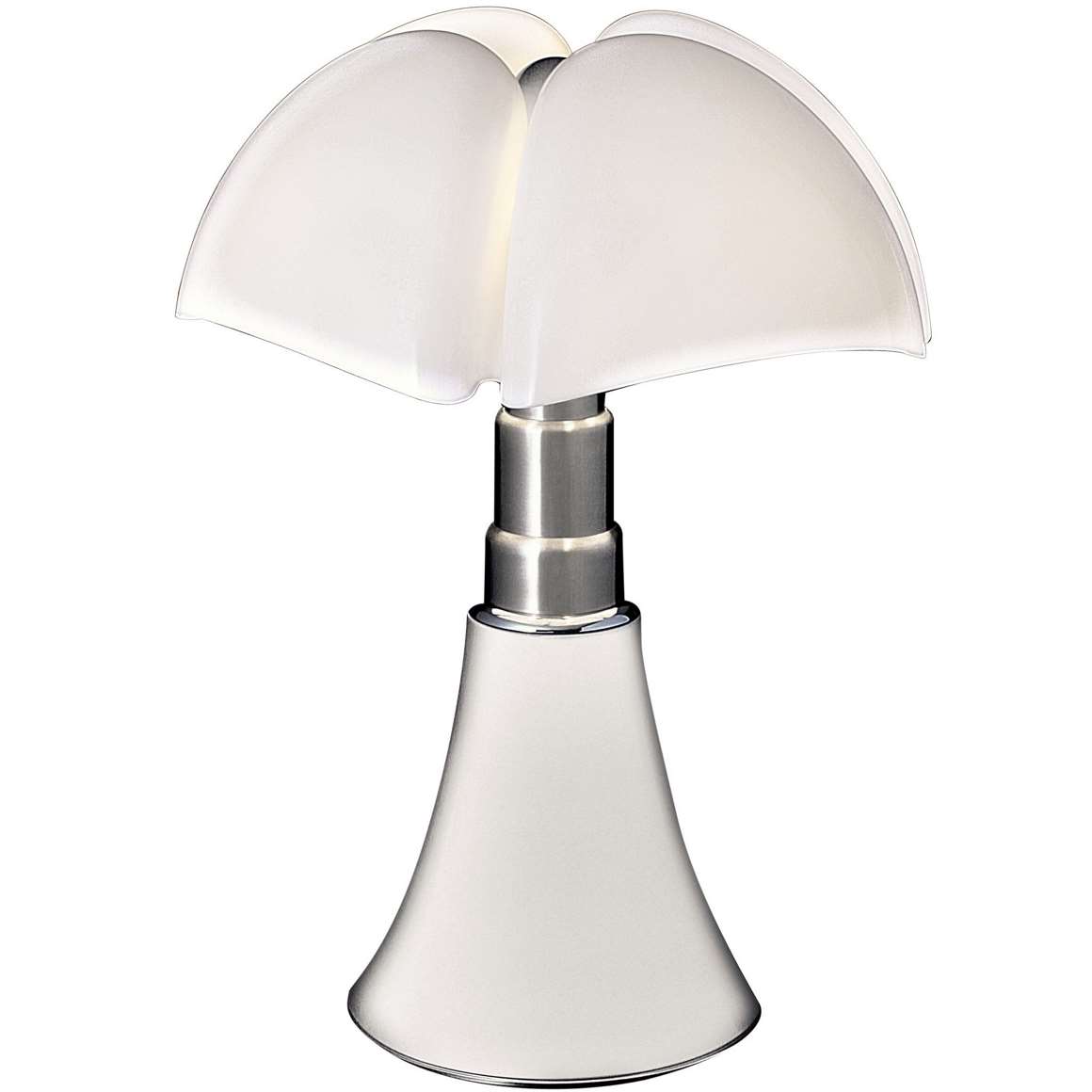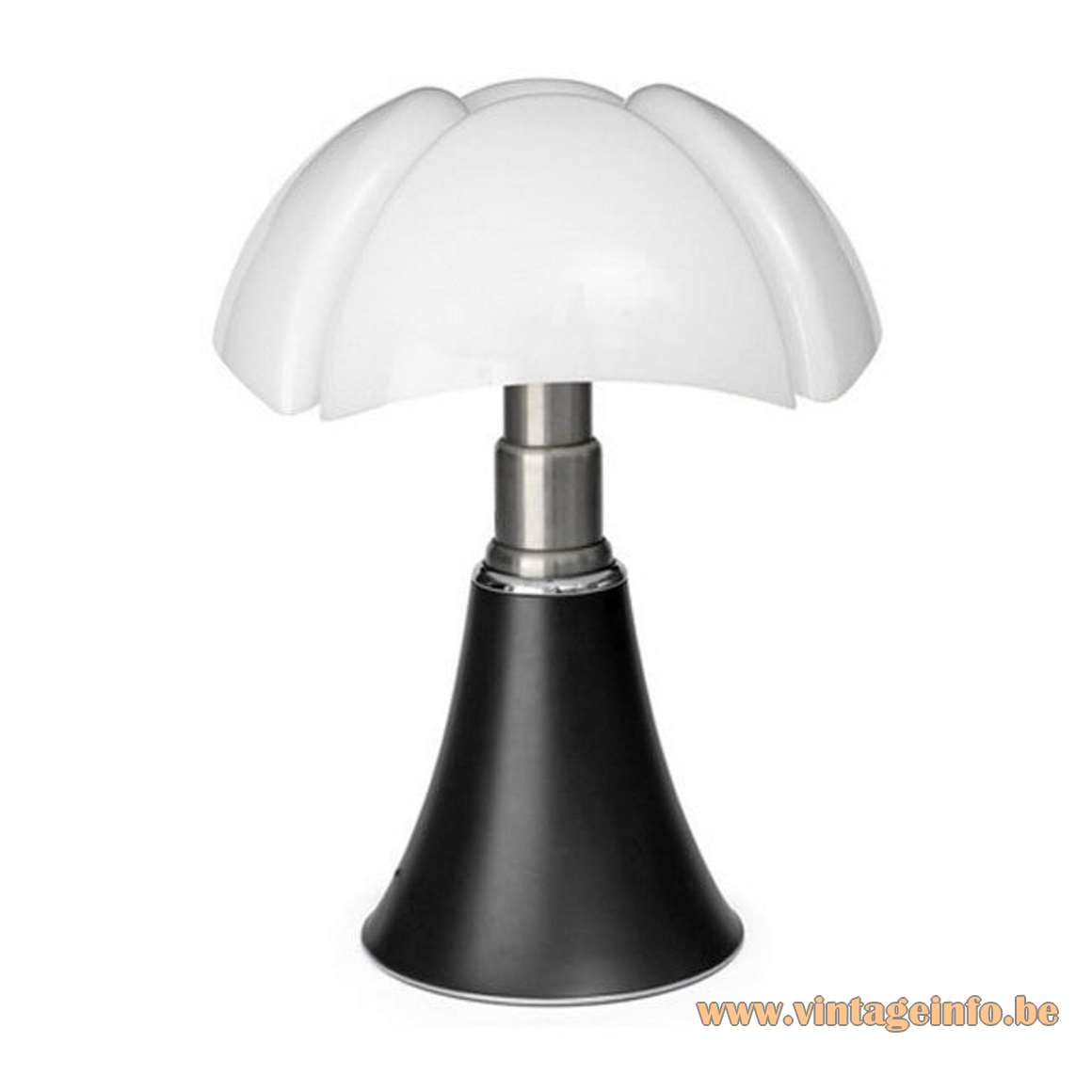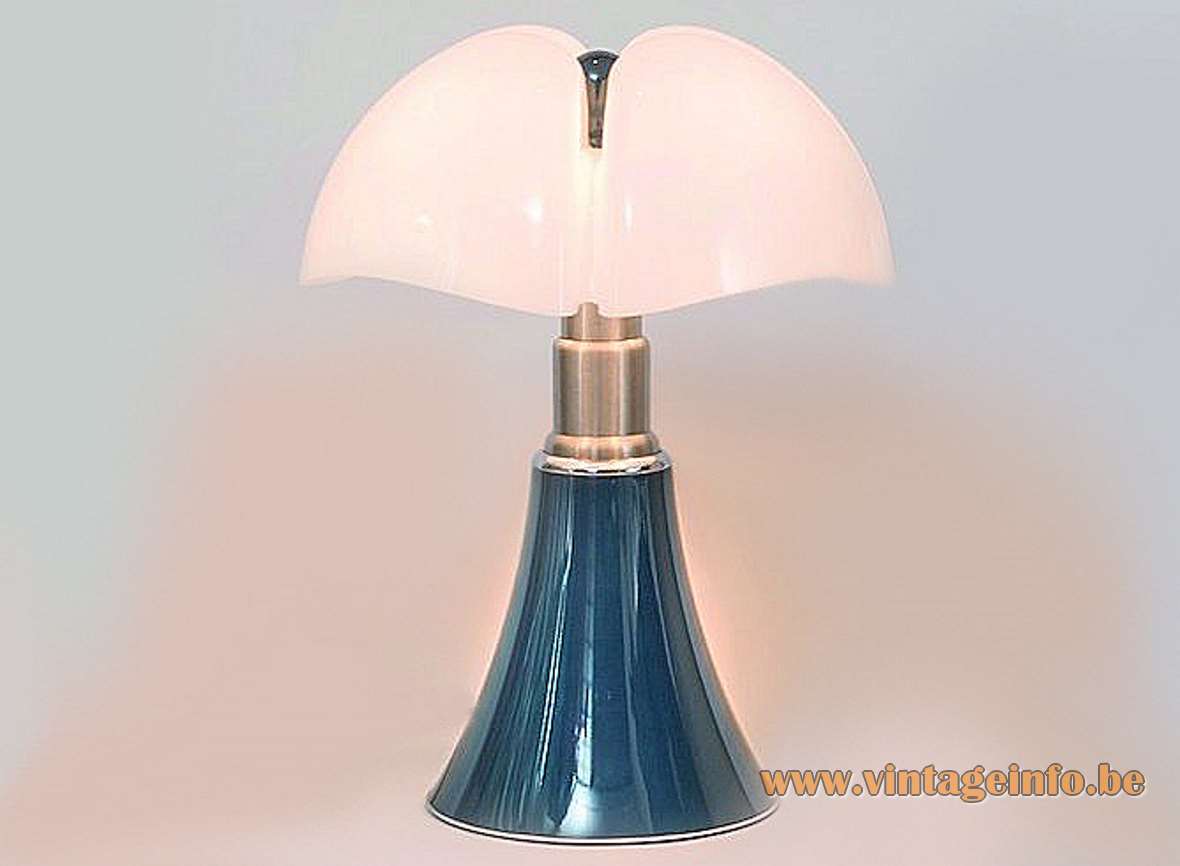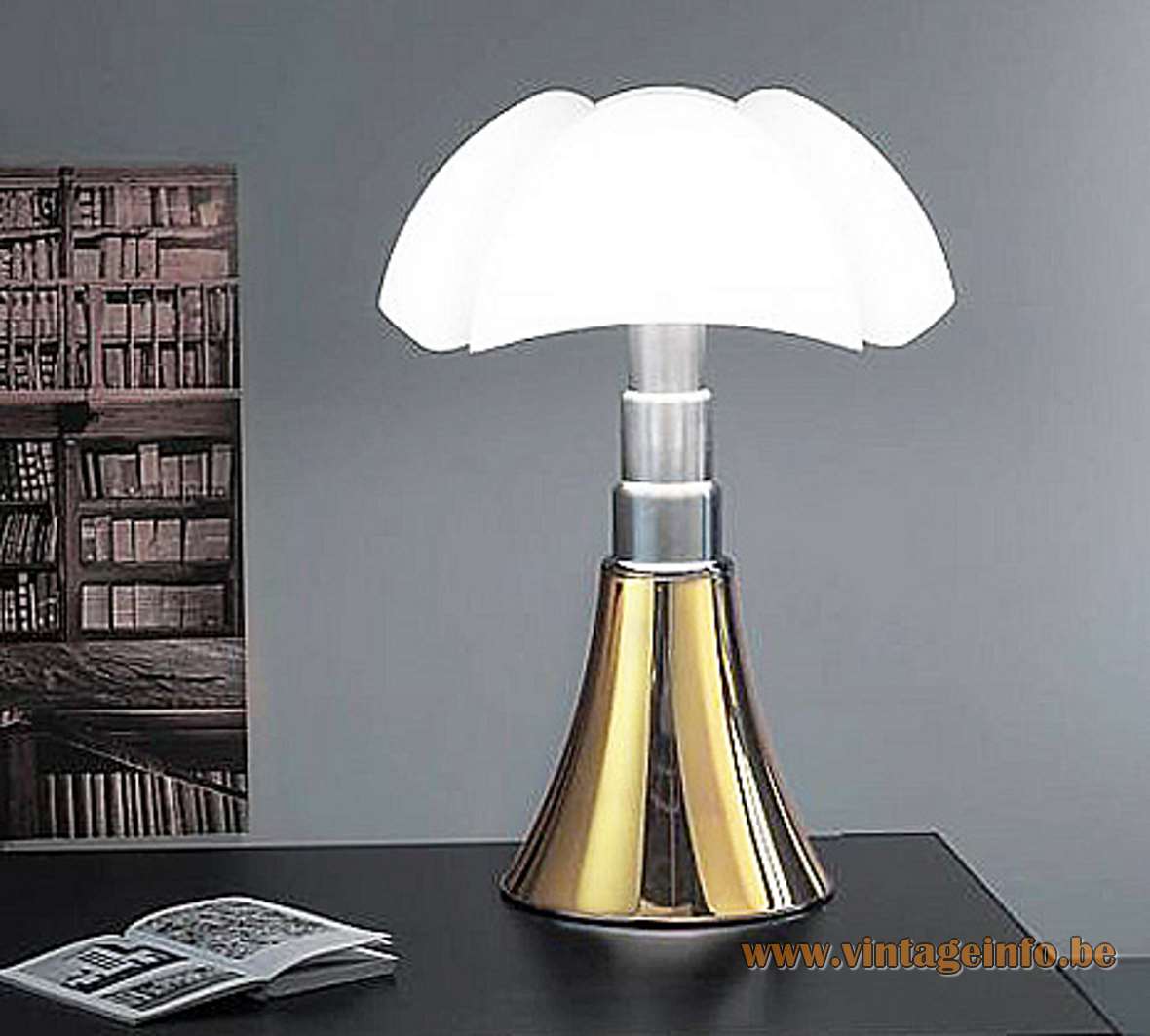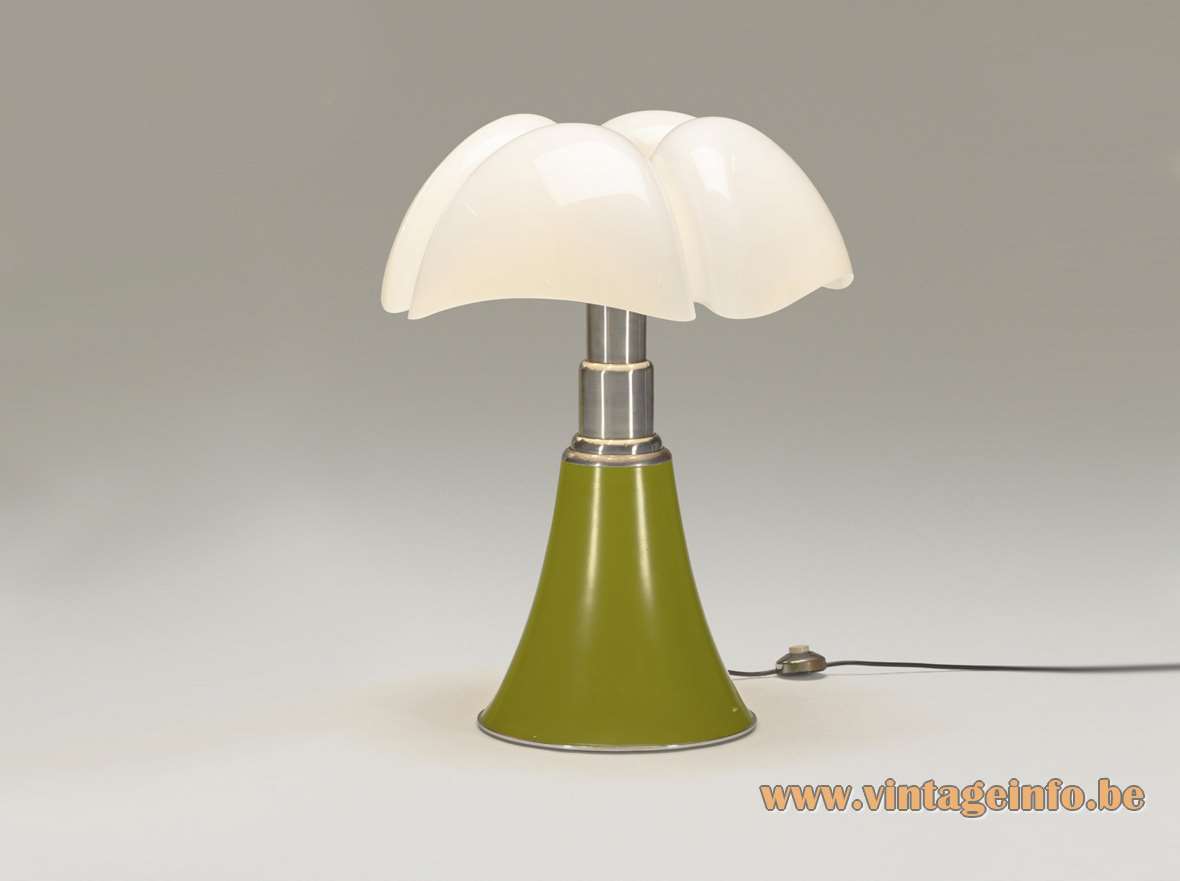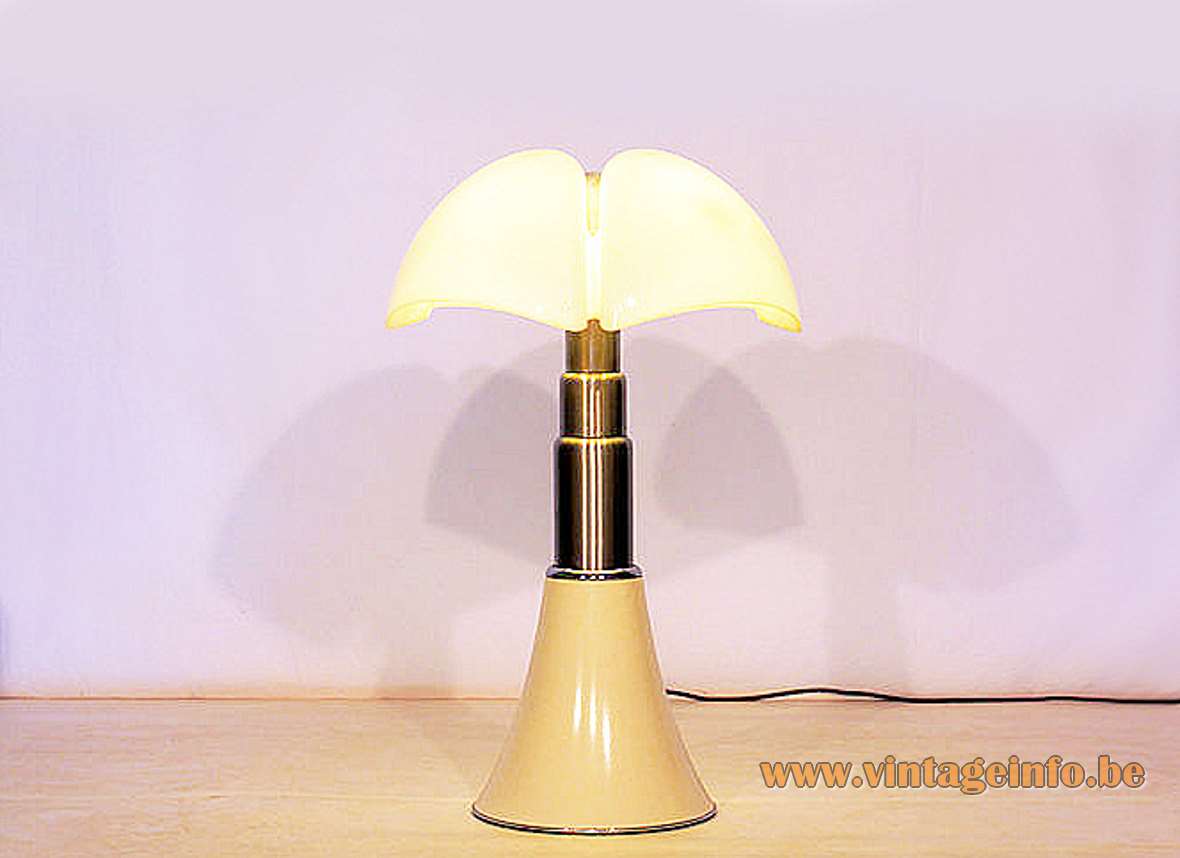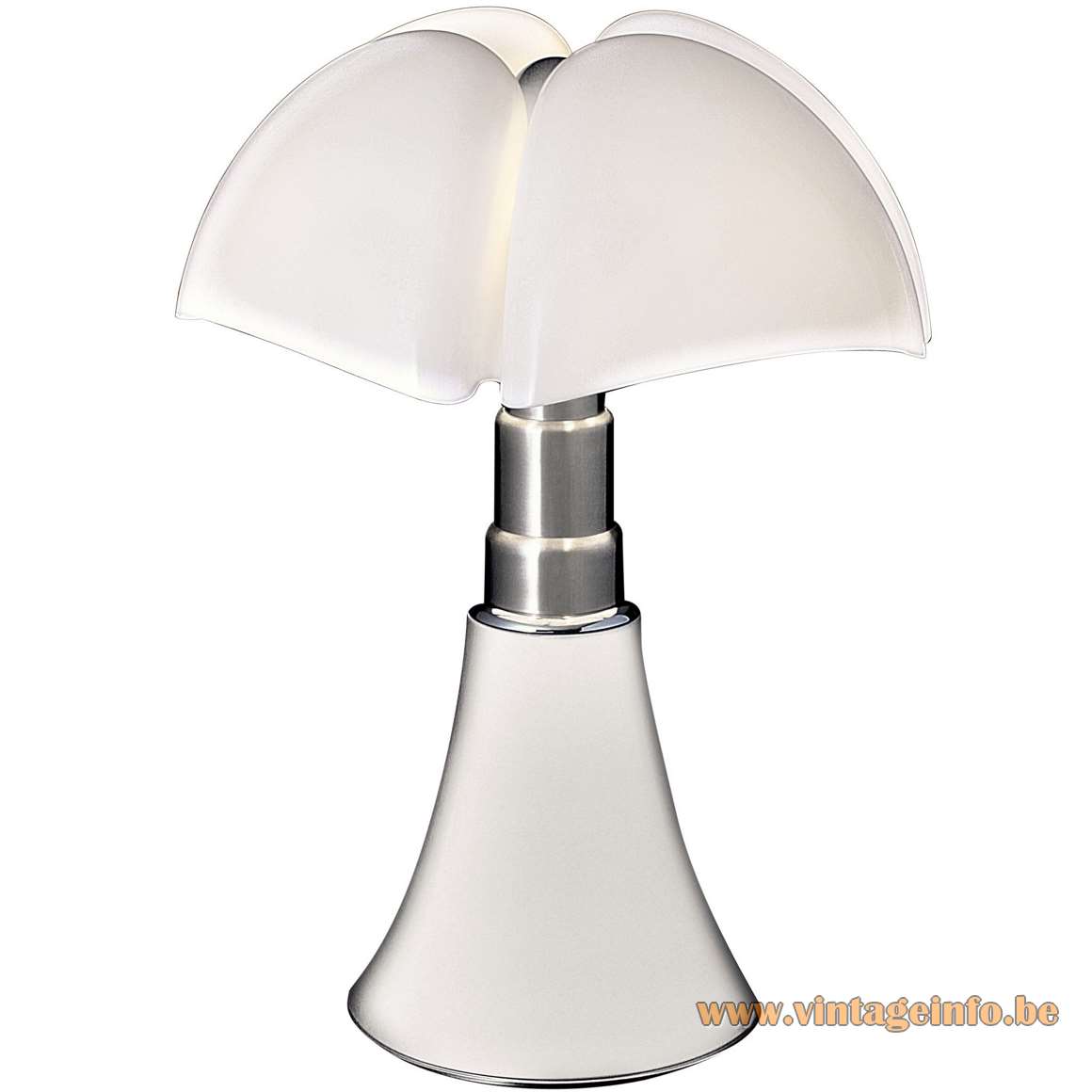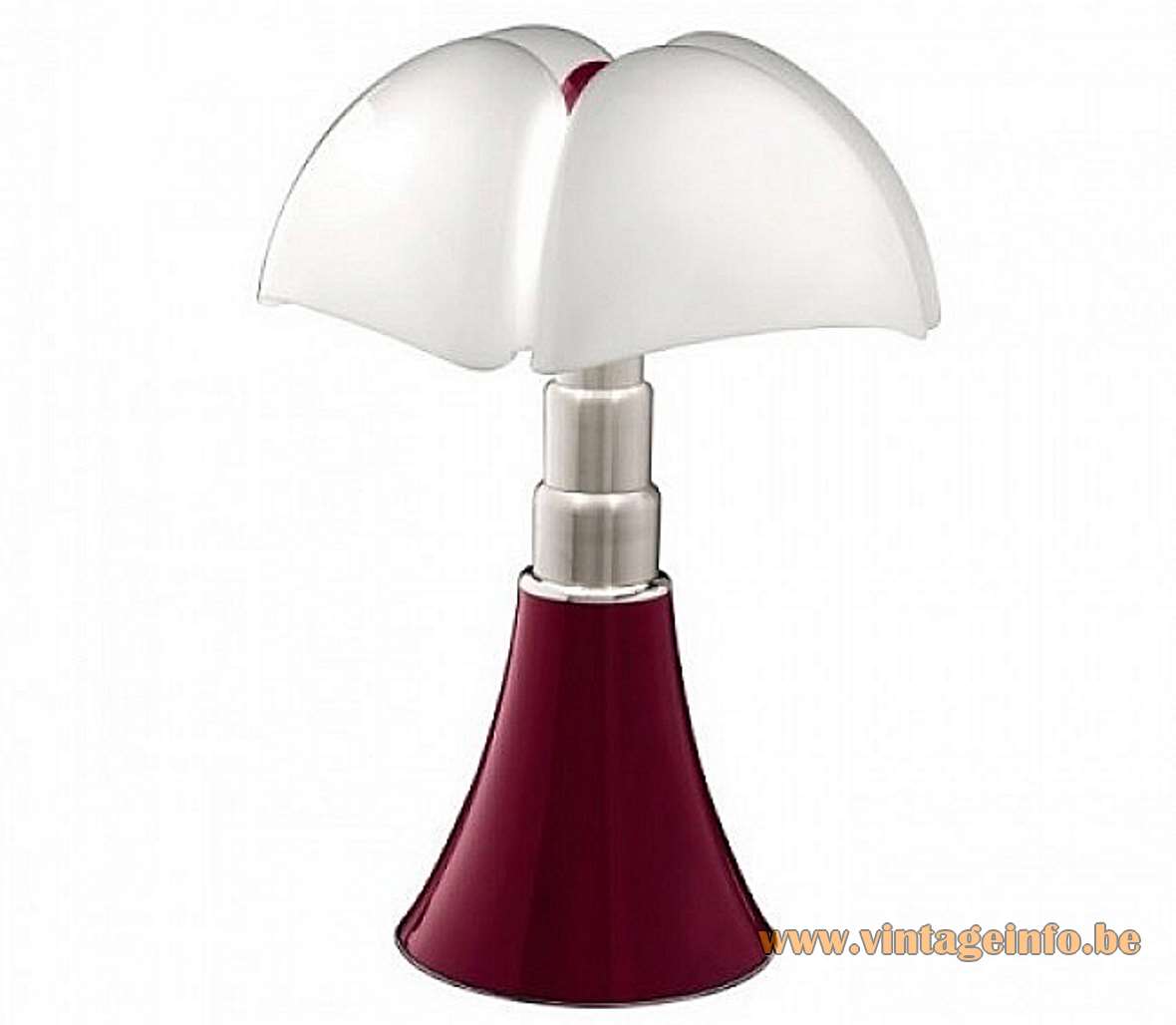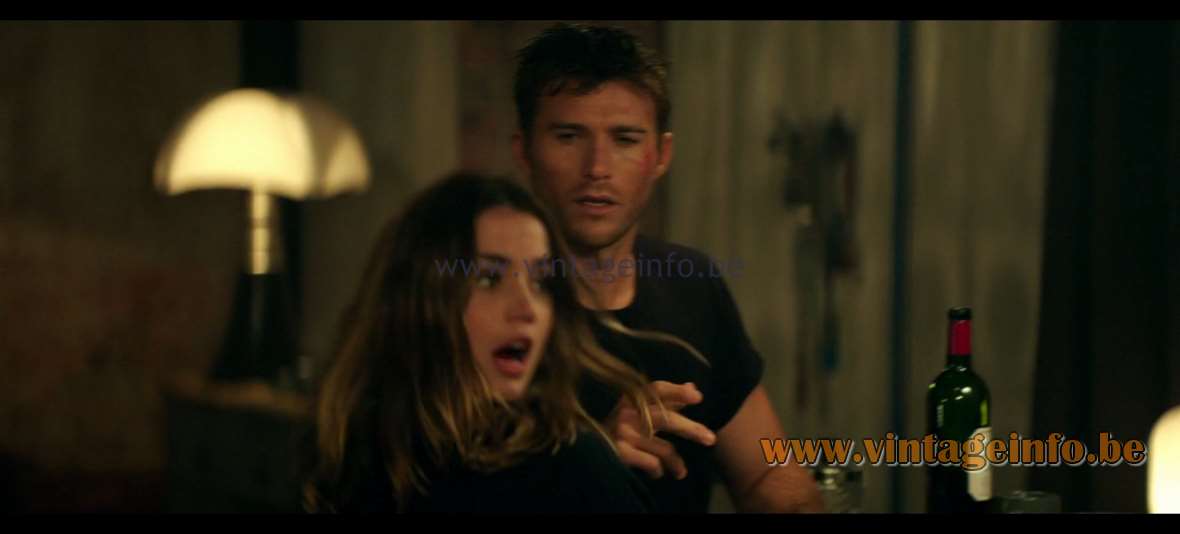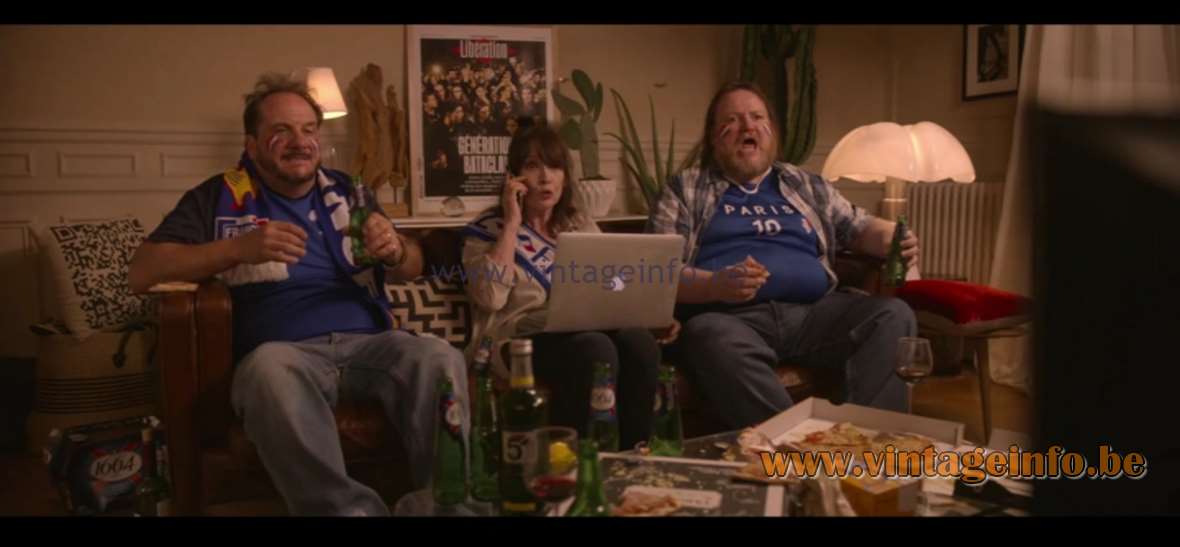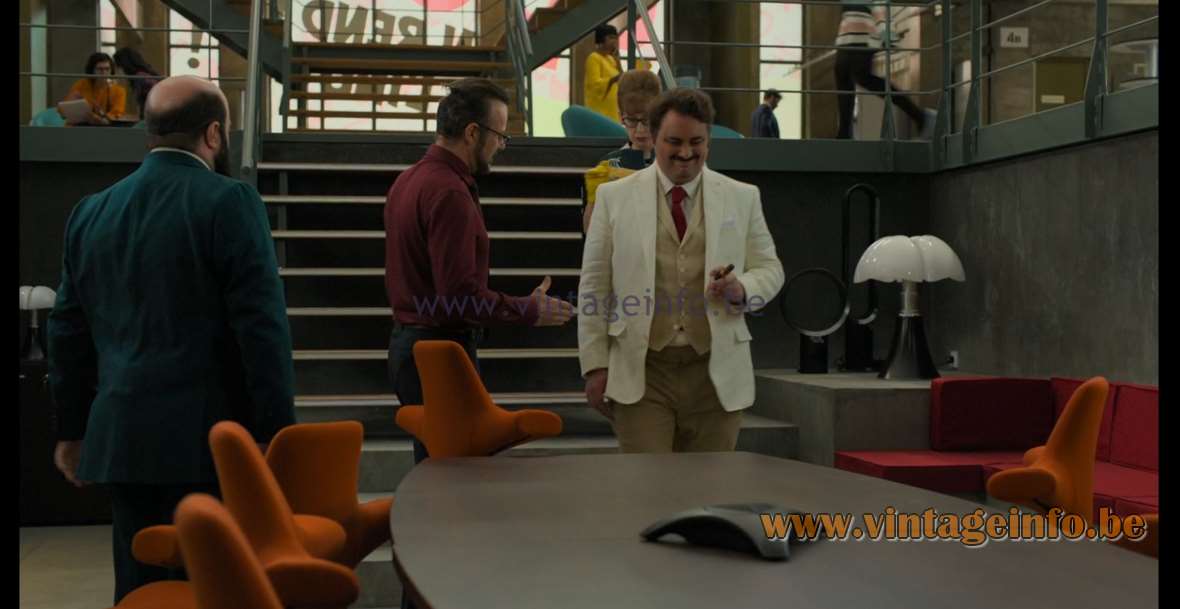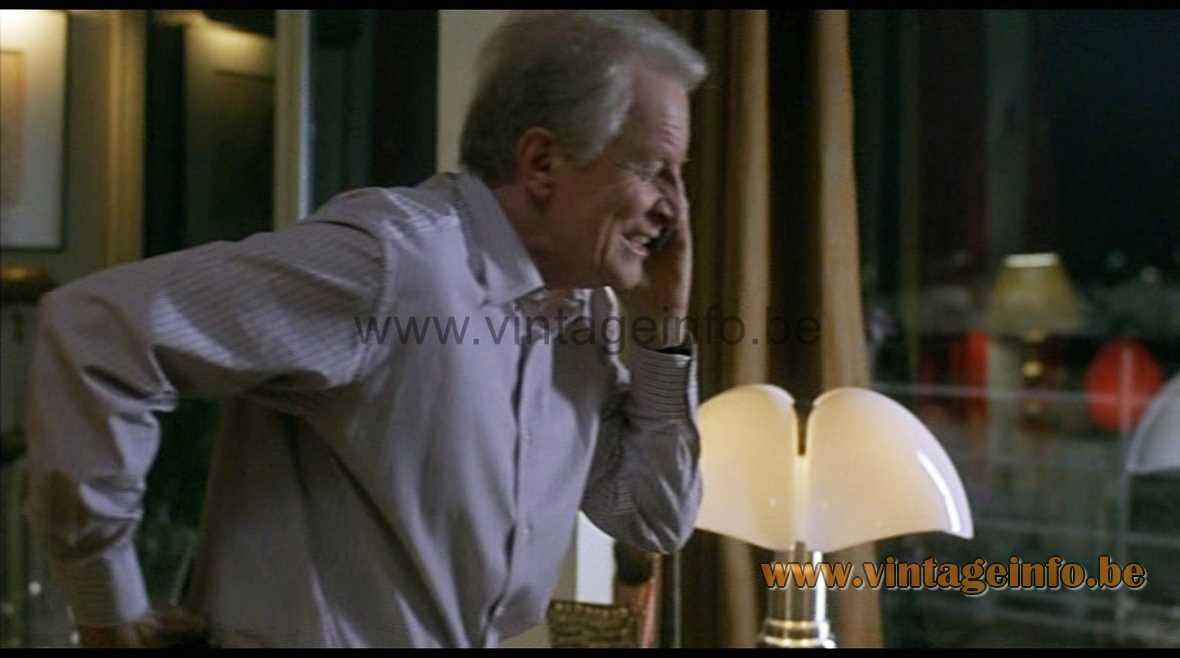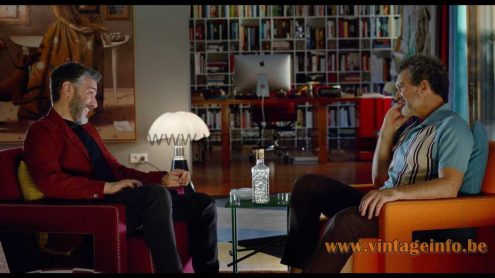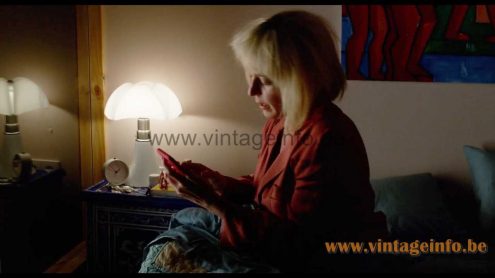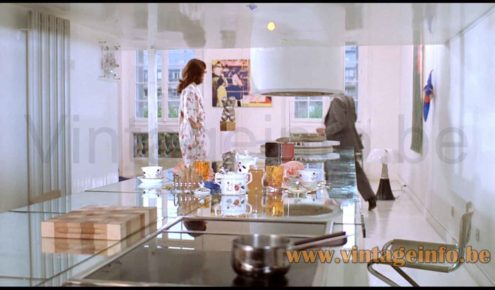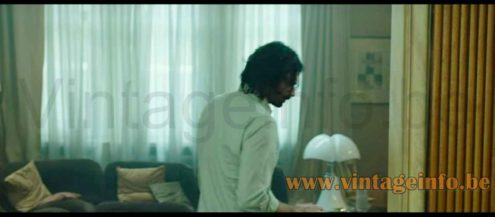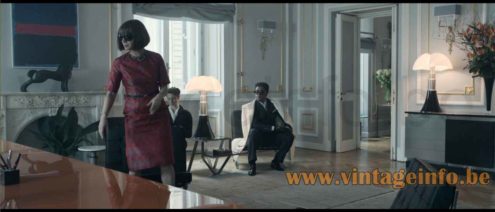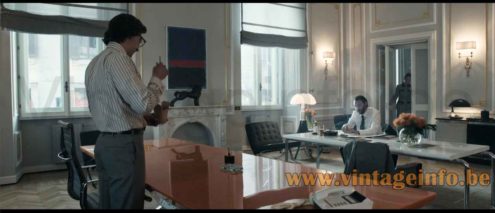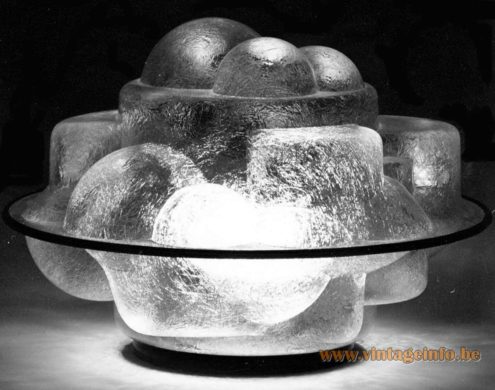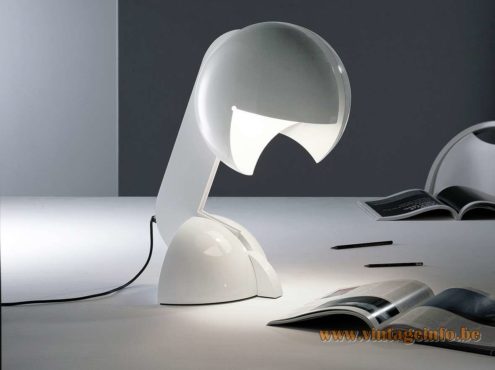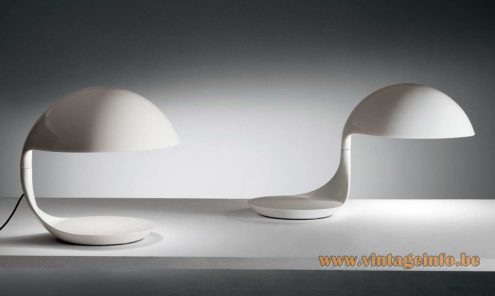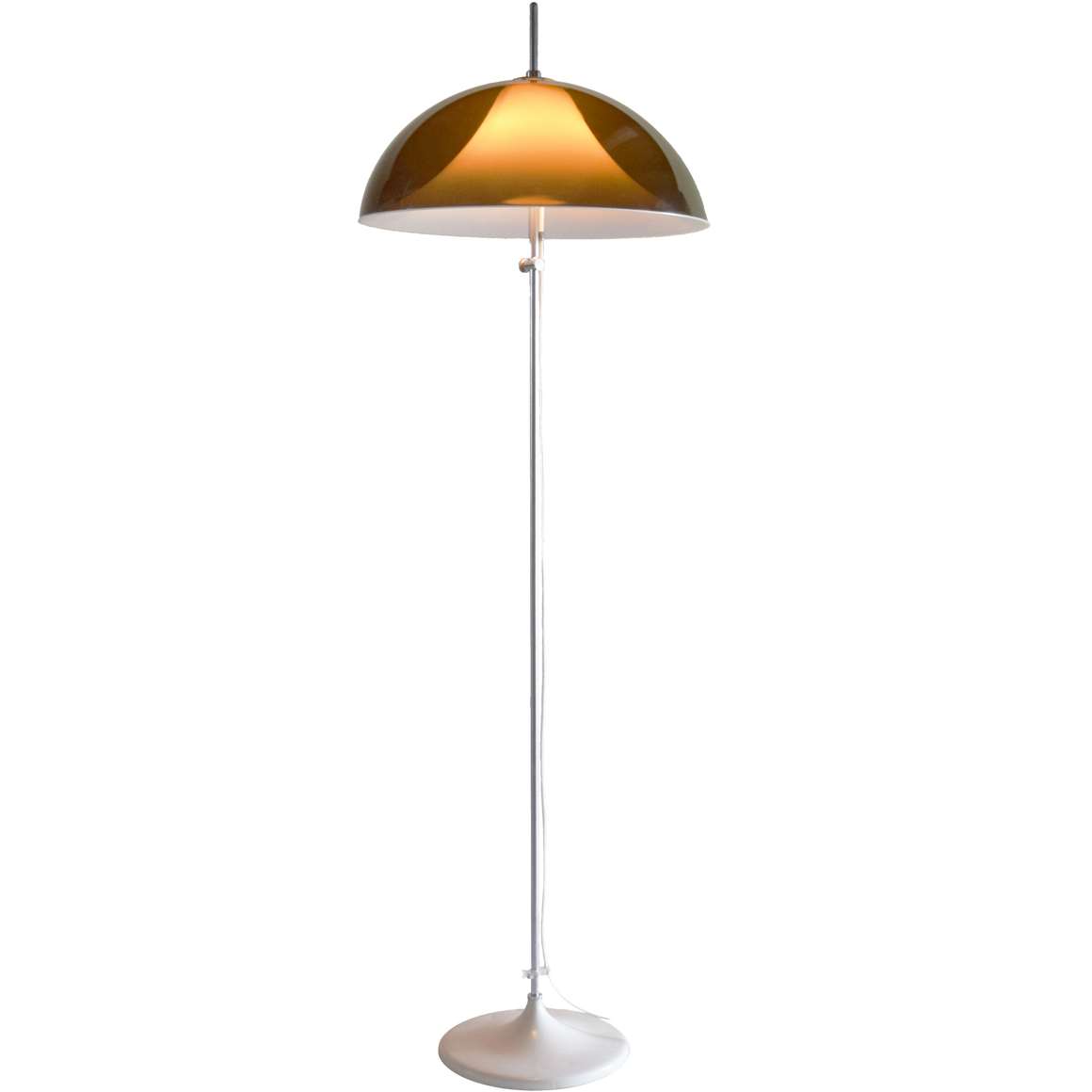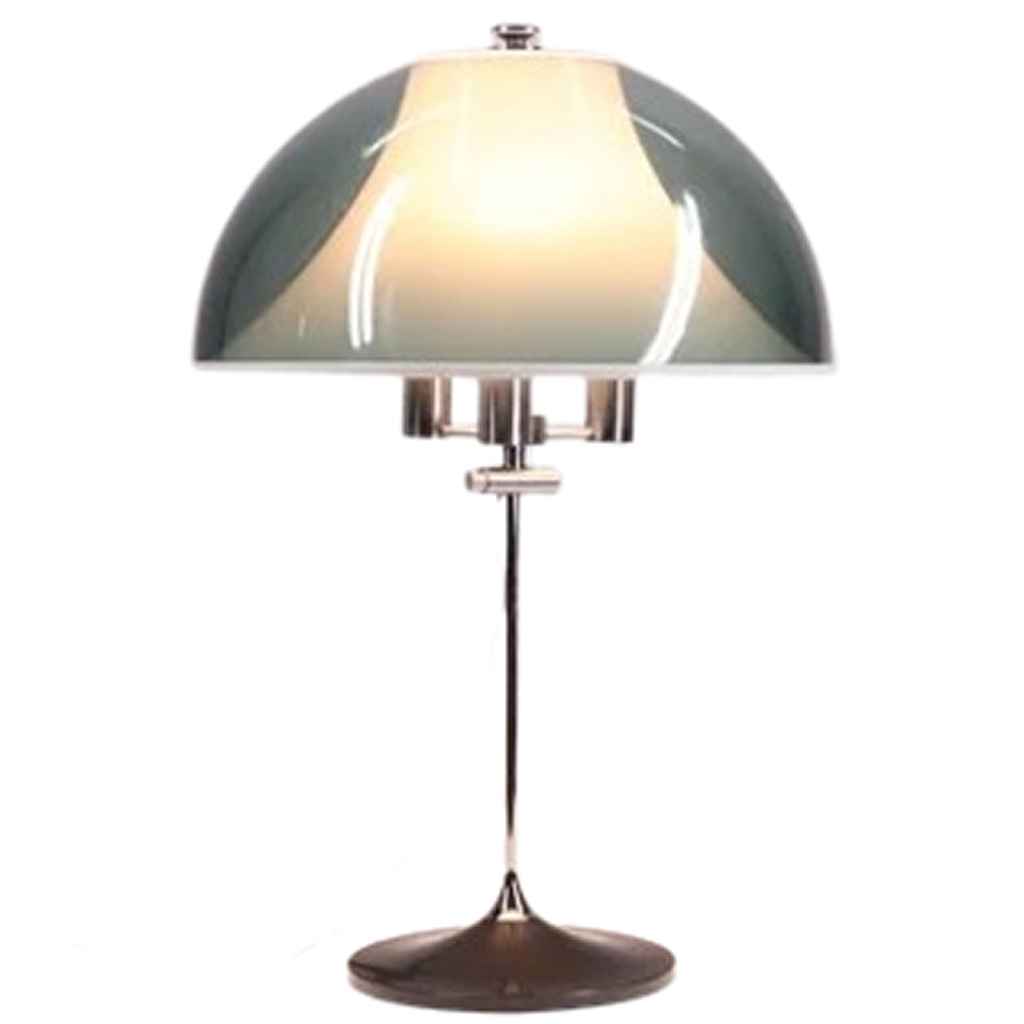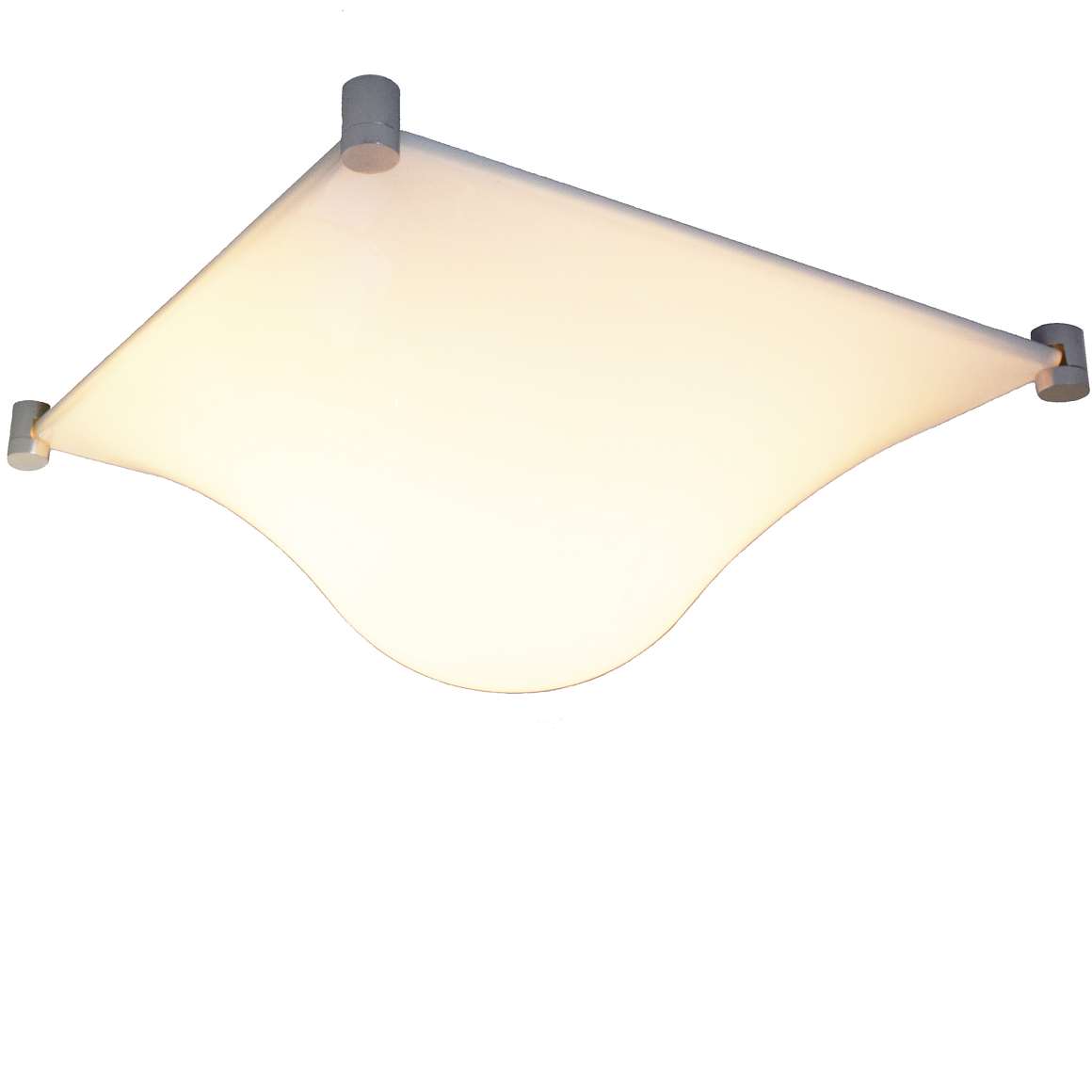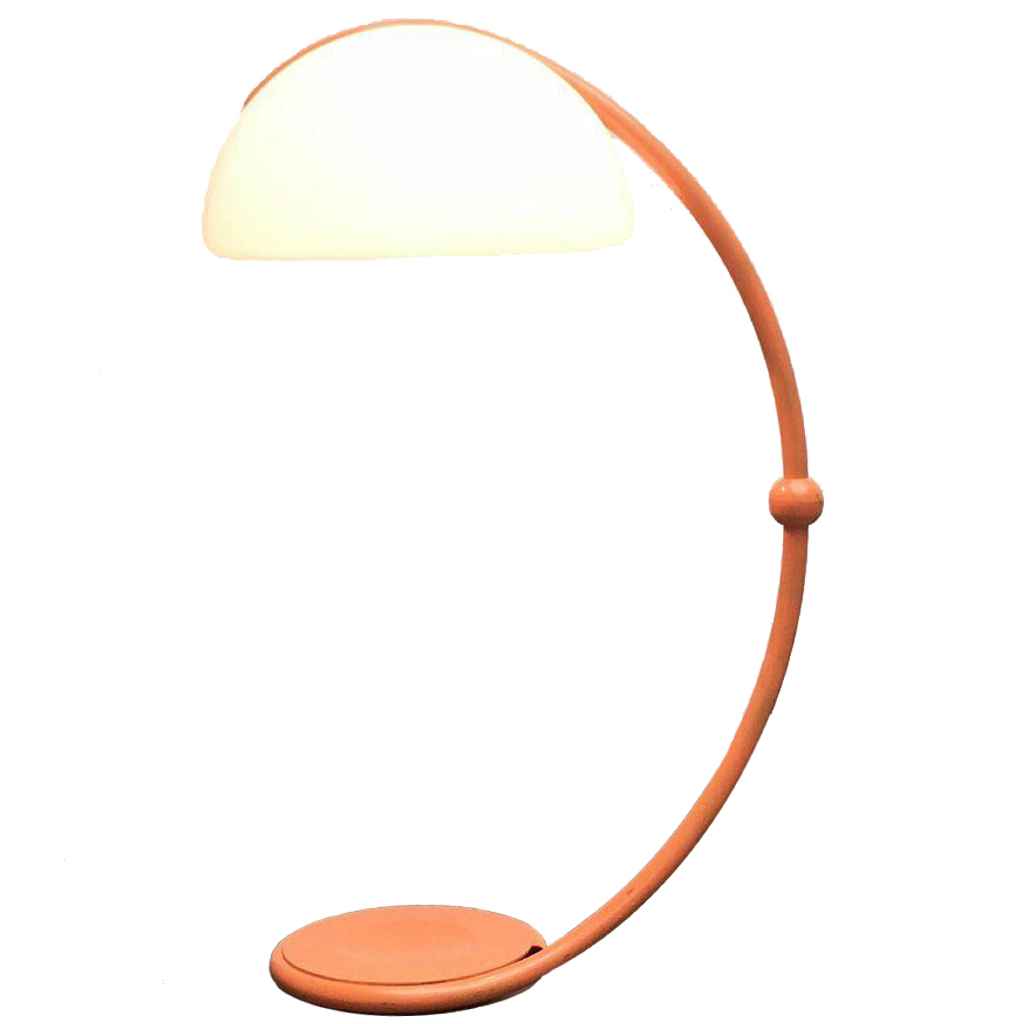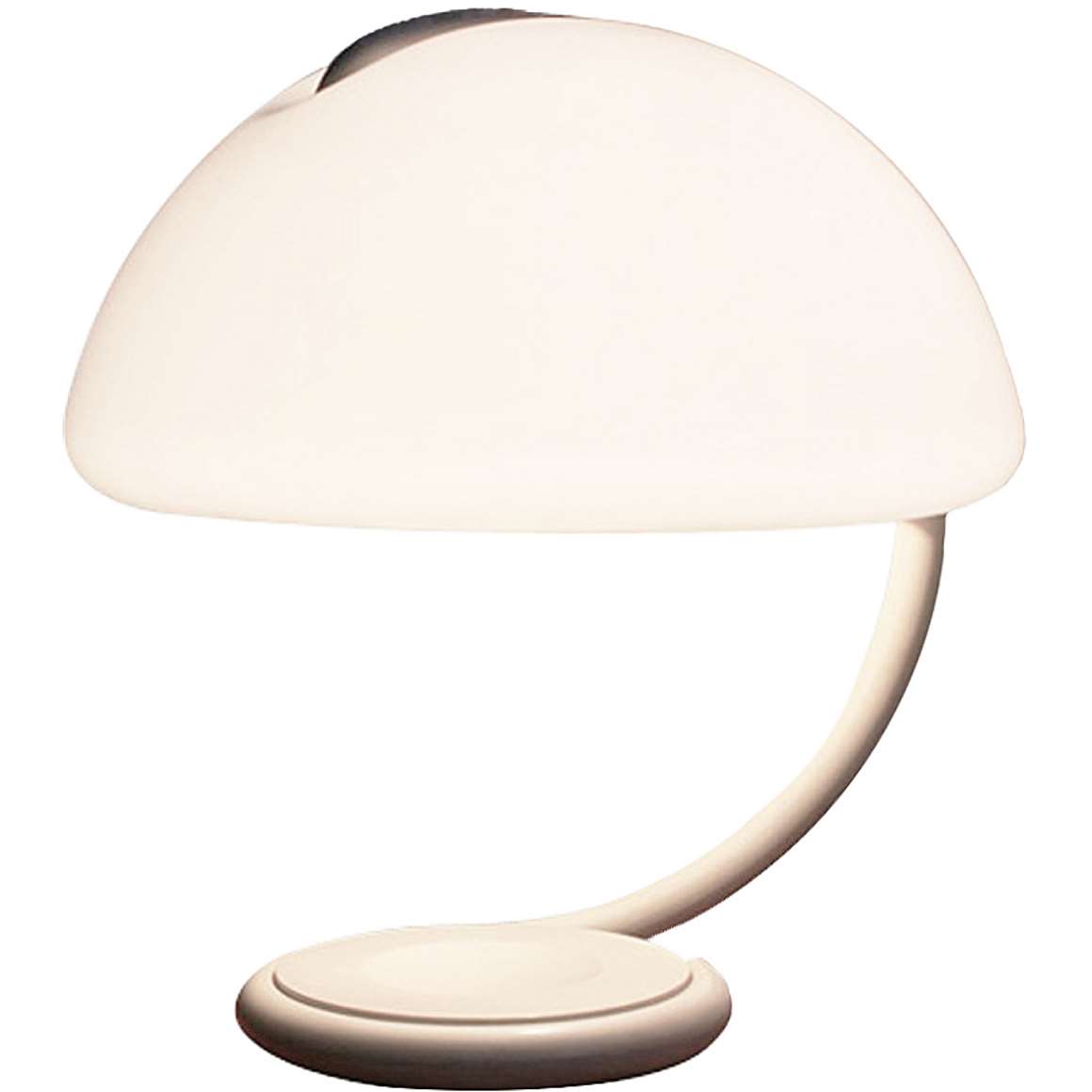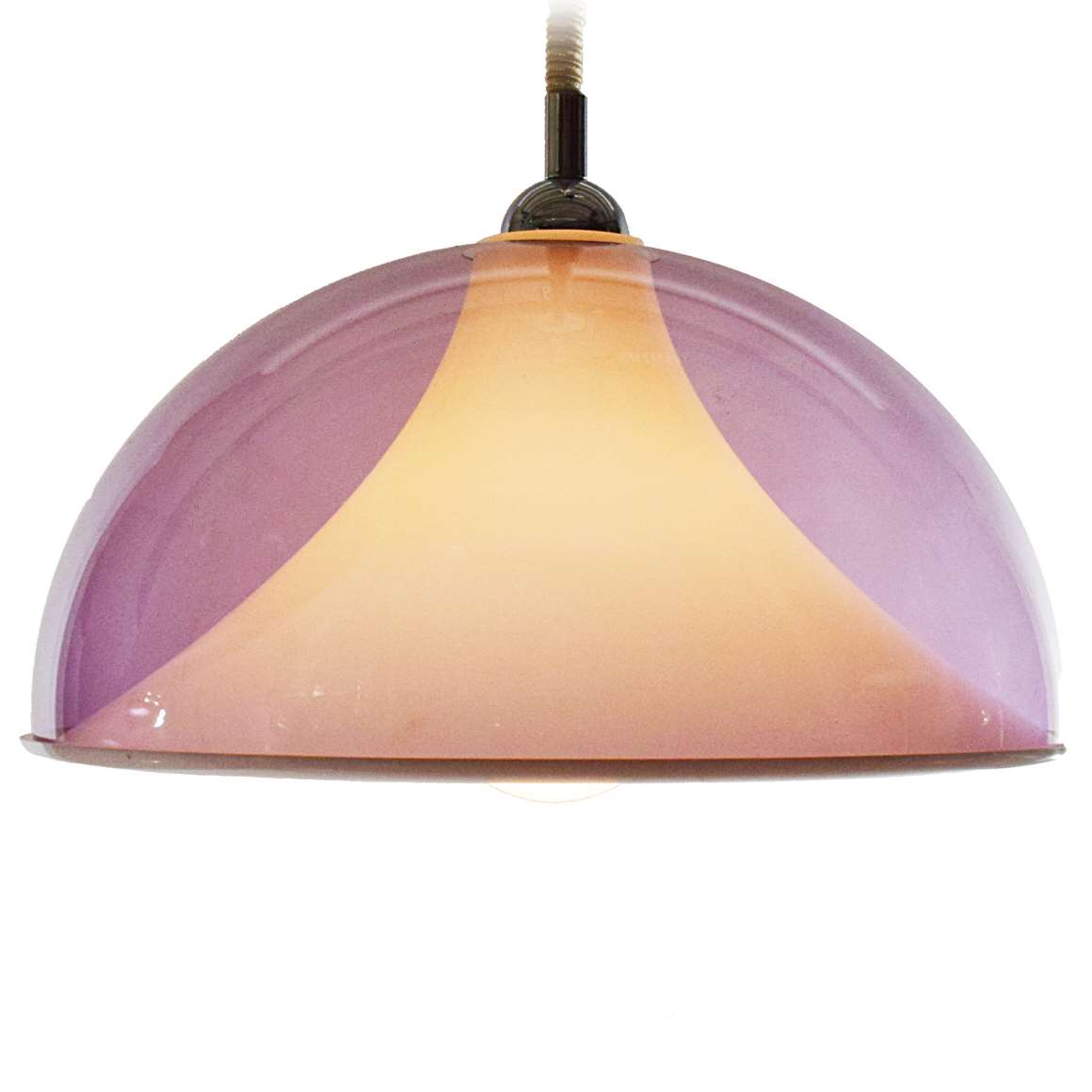Lamps In The Movies!
Overdrive (2017)
A Martinelli Luce Pipistrello table lamp was used as a set decoration in the 2017 film Overdrive. Overdrive is an action thriller film directed by Antonio Negret. Starring Scott Eastwood, Freddie Thorp and Ana de Armas.
Jour J (2017)
A Martinelli Luce Pipistrello table lamp was used as a set decoration in the 2017 film Jour J (alternative titel: Wedding Unplanned). Jour J is a French comedy film directed by Reem Kherici. Starring Reem Kherici, Nicolas Duvauchelle and Julia Piaton.
Gaston Lagaffe (2018)
A Martinelli Luce Pipistrello table lamp was also used as a set decoration in the 2018 French film Gaston Lagaffe. It is a movie made after the gag-a-day comic strip created in 1957 by the Belgian cartoonist André Franquin. Staring Théo Fernandez, Pierre-François Martin-Laval and Arnaud Ducret.
Tanguy (2001)
A Martinelli Luce Pipistrello table lamp was also used as a set decoration in the 2001 French comedy film Tanguy. Starring Sabine Azéma, André Dussollier and Éric Berger. Also a Ruspa table lamp, also designed by Gae Aulenti appears in the movie. This together with many other lamps. You can watch the complete film below on YouTube.
Dolor Y Gloria (2019)
A Martinelli Luce Pipistrello table lamp was used as a set decoration in the 2019 Spanish drama film Dolor Y Gloria (Pain And Glory) directed by Pedro Almodóvar. Starring Antonio Banderas, Asier Etxeandia and Penélope Cruz. It was chosen by Time magazine as the best film of the year. Many beautiful lamps appear in this film. Not to mention the rest of the interior. In another scene a Pipisterello Med appears, as you can see in the photo below.
Le Mouton Enragé (1974)
A Martinelli Luce Pipistrello table lamp, here used as a floor lamp, was used as a set decoration in the 1974 French-Italian comedy film Le Mouton Enragé (Love At The Top). Starring: Jean-Louis Trintignant, Romy Schneider and Jane Birkin.
Appunti Di Un Venditore Di Donne (2021)
A Martinelli Luce Pipistrello table lamp was used as a set decoration in the 2021 Italian film Appunti Di Un Venditore Di Donne (Notes Of A Female Salesman). Starring Mario Sgueglia, Miriam Dalmazio and Libero De Rienzo. Many other Italian lamps appear in this movie.
House of Gucci (2021)
2 Martinelli Luce Pipistrello table lamps were used as a table lamp in the 2021 American biographical crime drama film House of Gucci. Starring: Lady Gaga, Adam Driver, Jared Leto and several other famous stars. Many other beautiful lamps appear in this movie. But sometimes time travellers pass by. For example, a lady is playing on the dance floor in a disco in the 70s with a plastic LED globe lamp that changes colour all the time. Some recent Chinese gadget. LED already existed, but could not change colour yet. Also a black Cobra table lamp appears in it in a slightly changed interior. In another scene a white one was used.
Martinelli Luce Pipistrello Table Lamp
Materials: Lacquered curved conical metal base. Telescopic adjustable stainless steel stem. White acrylic bat style lampshade. Some metal parts. 4 Bakelite sockets.
Height: 66 – 86 cm / 25.98 – 33.85”
Lampshade: ∅ 55 cm / 21.65”
Base: ∅ 32 cm / 12.59”
Electricity: 4 bulbs E14, 4 x 60 watt maximum, 110/220 volt.
Any type of light bulb with an E14 screw base can be used, not a specific one preferred. Today available in LED but it uses E14 sockets (4 x 5 watt).
Period: 1960s – Mid-Century Modern.
Designer: Gae Aulenti (1927 – 2012) in 1965.
Manufacturer: Martinelli Luce S.P.A. (Società per azioni – Joint-stock company), Via Santa Lucia, 9, 55100 Lucca, Italy. Some 80 km (50 miles) away from Florence and 20 km (13 miles) from Pisa.
Other versions: The Martinelli Luce Pipistrello table lamp was made in many colours over the years. Today (2020) available in 5 colours: dark brown, white, purple red, glossy black, satin aluminium. 4 different lamps exist: This lamp, a medium size lamp, the Pipisterello Med, the Minipipistrello and the cordless version of the Minipipistrello.
Pipistrello is the Italian word for bat.
Gae Aulenti
Gae Aulenti, born 4 December 1927 as Gaetana Aulenti in Palazzolo dello Stella, Italy, some 90 km (56 miles) from Venice. She studied to be an architect at the Milan School of Architecture of the Polytechnic University (Politecnico di Milano), and graduated in 1954. Gae Aulenti began her career as an architect and freelance designer. She designed many interior designs and furniture for companies such as Fiat, Pirelli, Olivetti, Knoll International, Ideal Standard, Zanotta and Louis Vuitton.
Gae Aulenti designed lamps for among others: Artemide, Vistosi, Candle, Fontana Arte, iGuzzini, Poltronova, Stilnovo and of course Martinelli Luce. She also designed the Ruspa table lamp in 1968 for Martinelli Luce, as you can see on the left. Another table lamp that is still in production (2018).
The Harvey Guzzini Quadrifoglio is not a design by Gae Aulenti. It is published wrong in books. Gae Aulenti started to work for the iGuzzini company in 1985 and created together with Piero Castiglioni the (industrial) Cestello lamp for the Palazzo Grassi in Venice, Italy; 17 years after the Quadrofoglio was designed by Studio 6G, the Harvey Guzzini design-team.
Aulenti received many awards for her designs and she is seen as one of the greatest Italian designers after World War II. Gae Aulenti passed away in Milan on 31 October 2012, she was 84.
Martinelli Luce
Martinelli Luce was founded in 1950 by Elio Martinelli. He focused originally on interior design and on lamps for retail outlets, hotels, restaurants, and public houses. Designers that worked for the company: Adolini+Simonini Associati, Gae Aulenti, Sergio Asti, Michel Bouquillon, Marco De Santi – Studio Natural, Angelo Micheli, Studio Orlandini, Luc Ramael, Karim Rashid, Marc Sadler, Studio Lucchi & Biserni, Brian Sironi, Studio 4P1B and many others.
Elio Martinelli
Elio Martinelli was born in Lucca, Tuscany in 1921. He studied as a set designer at the Institute of Fine Arts in Florence. At first he worked for his father’s business within the lighting sector. Soon he began designing and installing his own lighting systems what resulted in the founding of his own company Martinelli Luce in 1950.
Elio Martinelli designed many famous lamps, many of them are still in production. The Biconica (1987), Duemiladuecentocinquanta (2250 in Italian – 1986), Le Rondini (1984), Foglia (1969), Cono (1980), Blow (1980), Out (1984), Tube (1977), Poliedro (1962), Flex (1969), Gomito (1974), Nuvole Vagabonde (1999), Serpente (1965), Elmetto (1976) and the Cobra (as you can see on the left, in 1968), to name the most important.
His works are on display in many design museums around the world. Martinelli worked until his dead in 2004 for the company.
Sergio Asti
Sergio Asti was born in Milan, Italy in 1926. He studied at the same school as Gae Aulenti, the Politecnico di Milano ( Milan School of Architecture of the Polytechnic University). After graduating in Architecture in 1953, he spent five years as Assistant Professor of Interior Design. He is one of the founders of the ADI, the Associazione per il Disegno Industriale (Association for Industrial Design).
Many objects designed by Sergio Asti are present in the collections of the most important museums around the world and he received numerous awards.
He designed lamps for Artemide, Candle, FontanaArte, Raak, Knoll International, Arteluce, Kartell, Bilumen, C.I.L. Roma, Poltronova, Martinelli Luce and several others. In 2018 still in production by Martinelli Luce: the Scafandro table lamp and the Profiterole table lamp, as you can see on the left.
Acrylic: often named by its commercial name: Perspex, Plexiglas, Crylux, Acrylite, Lucite, is a thermoplastic.
Profiterole Table Lamp, designed by Sergio Asti in 1968
Ruspa Table Lamp, designed by Gae Aulenti in 1968
A Martinelli Luce Pipistrello table lamp appears in an advertisement for Resi. Resi is a Belgian brand of frying fat produced by Vandemoortele. The photo was taken at the home of famous bicycle racer Eddy Merckx in the 1970s. Eddy Merckx is still the proud owner of this Martinelli Luce Pipistrello table lamp. Here together with his wife in the picture. “Ik eet graag frieten. Maar ze moeten licht zijn”: I like to eat french fries. But they must be light.
Links (external links open in a new window)
Vandemoortele – Resi fat website
Films
Overdrive film (2017) – Wikipedia
Jour J (Wedding Unplanned – 2017) – IMDb
Dolor Y Gloria – Pain And Glory (2019) – Wikipedia
Dolor Y Gloria – Pain And Glory (2019) – IMDb
House of Gucci (2021) film – Wikipedia
House of Gucci (2021) film – IMDb
Le Mouton Enragé (1974) film – Wikipedia
Le Mouton Enragé (1974) film – IMDb
Appunti Di Un Venditore Di Donne (2021) film – Wikipedia
Appunti Di Un Venditore Di Donne (2021) film – IMDb
Vintageinfo
Harvey Guzzini Quadrifoglio lamp
Other lamps in the film House of Gucci
Other lamps in the Appunti Di Un Venditore Di Donne (2021) film
Martinelli Luce Cobra Table Lamp, designed by Elio Martinelli in 1968
Martinelli Luce
Many thanks to Martinelli Luce and Chicca Manca – CeG Maxicom for the information and photos.
Many thanks to Steven for the Resi advertisement scan. And many thanks to Colin and Staf for the screenshots of the films.
